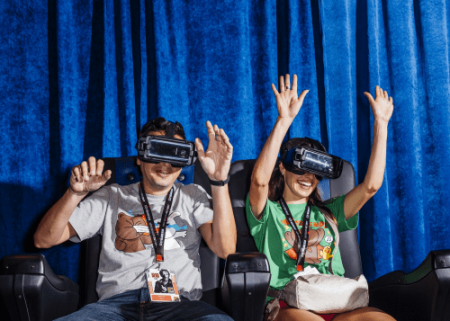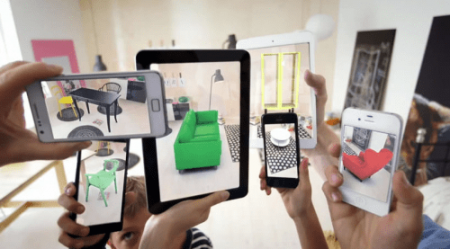March 12, 2018 – A reader made me aware of a site that writes about the differences between things. It is called Difference.guru. The editorial team of writers here likes to tackle a wide range of subjects explaining in a concise and easy to understand manner what the difference is between subjects like quantum and current computer systems, or mechanical versus electrical engineering, to name just two. In this posting, they have tackled the subject of differences between virtual and augmented reality. For many, the two are often confused. I hope you find these explanations useful and enjoy the read. Let me know in comments if you would like to see more of these types of postings.
When it comes to computer-generated simulations, virtual reality (VR) and augmented reality (AR) resonate well with the tech-savvy market. The experience of these two types of artificial environment is easily gaining traction even to those not too familiar with modern technology. Some people though, mistake one for a the other and cannot clearly distinguish between the two. Let us help you understand the differences.
A summary is a good starting point.
Virtual Reality
- Shows an entirely virtual world
- Difficult to differentiate between what is real and what is not real
- Achieved with the use of a head-mounted display, closed visors, helmet or goggles
Augmented Reality
- Shows a mix of virtual world and real world
- Can interact and distinguish between the virtual and real world
- Achieved with the use of clear visors or a smartphone

VR is a totally immersive, lifelike experience of a three-dimensional environment achieved through computer-generated simulation. It provides a make-believe environment, often transporting the user somewhere else and completely changing their perceived present state. The experience also gives users the ability to manipulate objects or perform a range of actions.

AR expands real-world environments using computer-generated perception to supplement a person’s current state of presence. AR takes a current scenario and layers enhancements on it. The digital components add to the real world experience but still let users distinguish between what is real and what is not.
VR vs AR
VR and AR are both about altering the perception of visual spaces. The main difference between them is defined by the user’s overall experience and by the technology deployed.
User Experience
VR is about providing a true-to-life virtual experience. It provides a user with an entire simulation of their present space. With VR it is difficult to distinguish between what is real and what is not real.
AR, on the other hand, takes digital information and integrates it into a user’s present environment or space. Here, one can clearly distinguish between the virtual world and the real world.
Gadgets Used
In order to achieve the VR experience, users view displays through closed visors, helmets or goggles. These devices deprive a user of access to other stimuli, often in terms of visual and auditory cues. This creates the full effect of an imaginary reality and the feeling of experiencing a simulated world firsthand.
AR, on the other hand, uses clear visors or smartphones and downloaded apps that take advantage of the phones onboard global positioning system (GPS) capability. This determines the user’s current location and enables the AR to interact with he or she feeding digital components on screen or in the visor display to enhance what is being viewed in the real environment.








